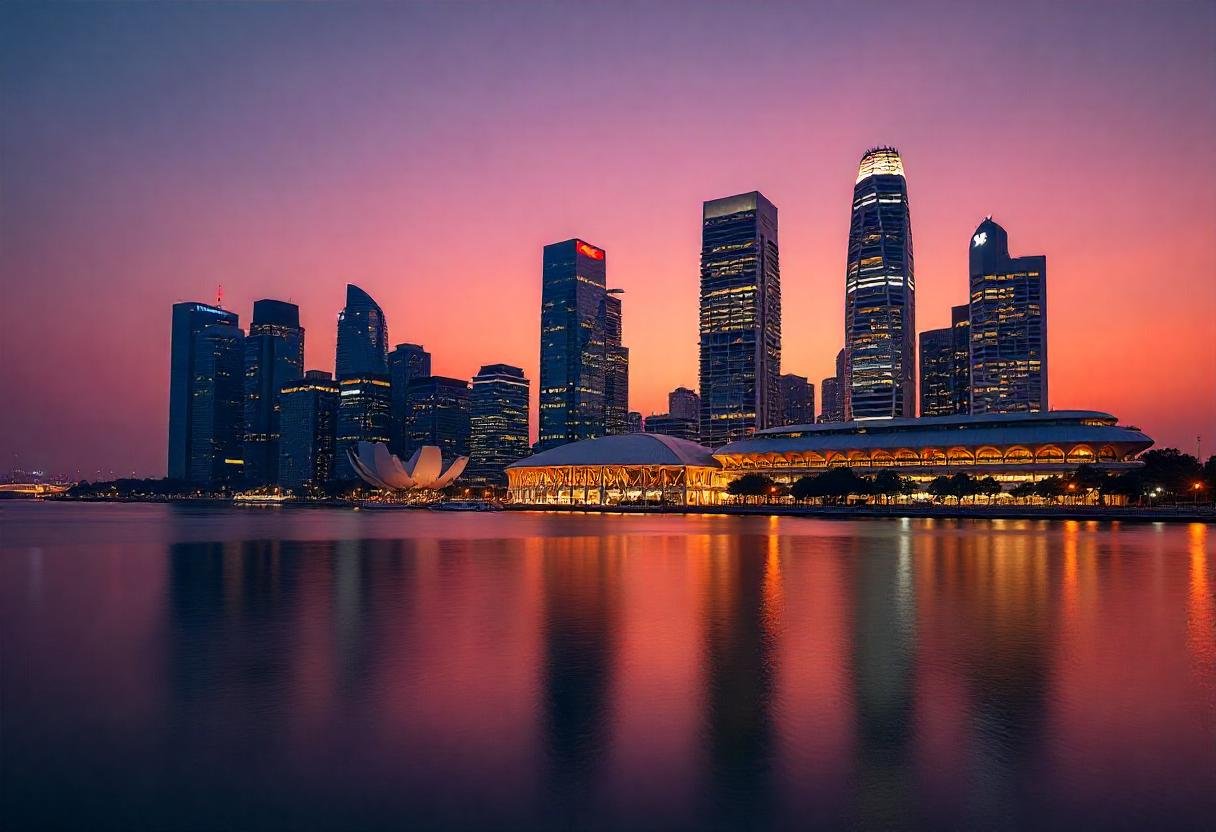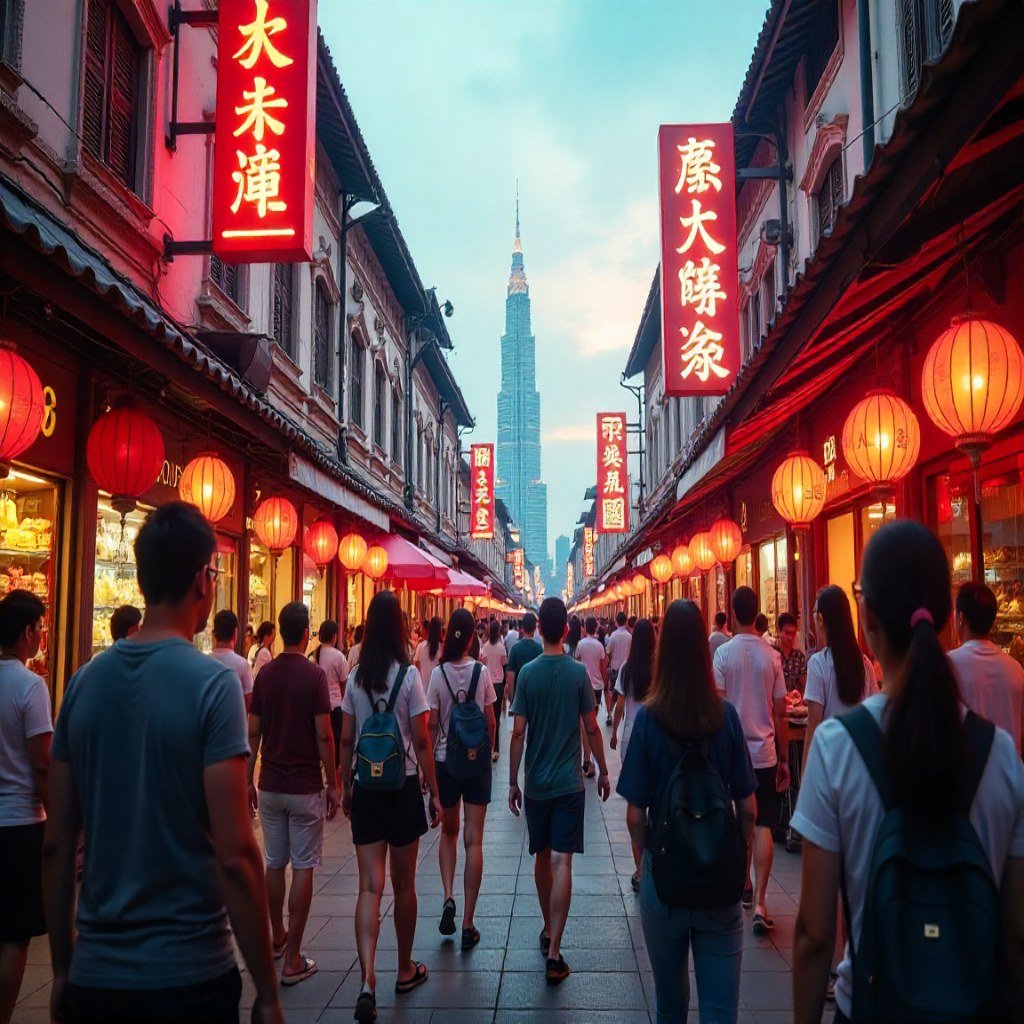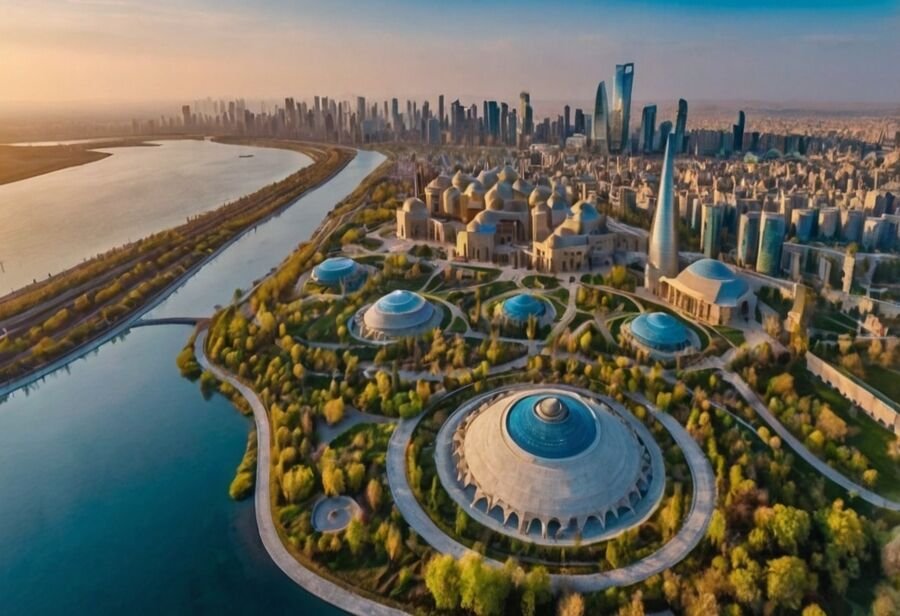Asia Travel Pulse
Singapore Celebrates 60 Years of Independence with Agoda’s SG60 Celebration Campaign, Offering Exclusive Discounts on Hotels, Flights, and Travel Packages for Regional and Long-Haul Tourists

Thursday, July 31, 2025
In a remarkable initiative to celebrate Singapore’s 60th year of independence, Agoda has launched its SG60 Celebration Campaign, designed to drive tourism and attract travelers from across Asia and beyond. With a year-long celebration planned to mark this monumental occasion, Agoda is tapping into the growing international interest in Singapore by offering enticing discounts and collaborating with major industry players such as Resorts World Sentosa, Singapore Airlines, and Furama Hotels International. The campaign aims to bolster Singapore’s tourism sector and make this milestone year even more memorable for visitors.
Introduction: A Global Invitation to Celebrate Singapore’s Milestone
As Singapore marks six decades of independence, the SG60 Celebration Campaign is playing a key role in driving tourism and economic growth during this monumental year. With travel booming post-pandemic, Agoda’s campaign is positioned to take advantage of the surge in interest from both regional and long-haul travelers. The city-state’s iconic landmarks, diverse cultural landscape, and rich culinary experiences are drawing an increasing number of international tourists. As a result, Singapore is not just celebrating its anniversary, but also the global recognition it continues to earn as a must-visit destination.
The SG60 celebration is being highlighted with substantial discounts and promotional offers, ranging from 10% to 20%, across various travel services, including hotels, airlines, and attractions. Agoda’s data-driven strategies and collaborations with hospitality giants like Furama Hotels and airlines such as Singapore Airlines and Firefly reflect an unwavering commitment to leveraging Singapore’s profile to engage tourists. These promotional deals are available for travelers visiting Singapore between August 1 and August 15, 2025.
Agoda’s research reveals a significant interest from several Asian countries, with Thailand seeing the highest increase in searches, up by 10% year-over-year. Other countries like Indonesia, the Philippines, South Korea, and Malaysia are also key markets driving traffic to Singapore. Interestingly, long-haul markets such as Austria, Spain, and Denmark are also showing growing interest, indicating Singapore’s expanding global footprint.
Why Singapore? A Rich Tapestry of Culture and Modernity
Singapore’s appeal as a tourism hub goes beyond its 60 years of independence. The city-state offers an unmatched blend of old-world charm and modernity. Visitors are captivated by Singapore’s multiculturalism, reflected in its diverse neighborhoods such as Chinatown, Little India, and Kampong Glam. Each area is a vibrant testament to Singapore’s melting pot of cultures, offering travelers a unique blend of traditions, architecture, and cuisine.
The city is also famed for its world-class shopping and entertainment, with iconic shopping malls like Orchard Road and Marina Bay Sands attracting visitors from around the globe. The famed Gardens by the Bay, a testament to Singapore’s commitment to sustainable urban living, continues to awe tourists with its breathtaking Supertree Grove and Flower Dome.
Food is another powerful draw for Singapore. Renowned for its food scene, the city is home to some of the best street food markets, including Maxwell Food Centre and Lau Pa Sat, where food lovers can indulge in local favorites like Hainanese chicken rice, laksa, and chili crab. For many, Singapore’s food culture is a key reason to visit, offering a sensory journey like no other.
The SG60 Celebration: The Heart of the Campaign
The SG60 campaign offers an exciting opportunity to explore Singapore during a year-long series of events. As part of the celebration, visitors can experience a host of activities, including cultural performances, food festivals, and art exhibitions, making the experience a truly unforgettable one. Agoda’s discounts and promotions offer the perfect opportunity for travelers to plan their trips around these events, ensuring that they make the most of their visit.
From August 1 to August 15, 2025, Agoda is offering discounts on both inbound and outbound travel bookings. These discounts span hotels, airlines, and other services, giving travelers the best deals to plan their trips to Singapore. Agoda’s collaboration with major industry partners such as Singapore Airlines, Resorts World Sentosa, and Furama Hotels International ensures a seamless travel experience for all visitors. These collaborations serve to reinforce Singapore’s position as a top-tier global destination.
Data Insights: Growing Interest from Regional and Long-Haul Markets
Agoda’s latest search data from April to June 2025 paints a picture of increasing interest in Singapore. According to the data, Thailand saw the highest search growth at 10% year-over-year. This is in line with Singapore’s broader efforts to attract tourists from Southeast Asia, with key markets such as Indonesia, Malaysia, and the Philippines also showing a surge in interest.
What’s even more encouraging is the growing appeal of Singapore among long-haul travelers. Countries like Austria, Spain, and Denmark have also recorded an increase in search traffic, signifying Singapore’s expanding global appeal. This trend highlights the success of Agoda’s data-driven campaigns, which effectively reach travelers from various parts of the world, further cementing Singapore’s status as a global hub for tourism.
Industry Collaboration: A Key to Success
The SG60 Celebration Campaign has been made possible through strategic partnerships with a host of industry leaders. Agoda’s collaboration with hotels, airlines, and other service providers allows travelers to benefit from exclusive offers and promotions. Leading hospitality providers like Furama Hotels International and Resorts World Sentosa have been integral to the campaign’s success, offering discounted rates and enhancing the overall travel experience for visitors.
“Agoda’s partnership with the tourism industry helps us reach a diverse customer base, from new to returning travelers,” said Mathew Chan, Regional Director of Revenue at Furama Hotels International. This collaboration underscores Agoda’s commitment to working closely with industry players to create a seamless travel experience for all.
Additionally, the involvement of airlines like Singapore Airlines, Malaysia Airlines, and Firefly reflects the crucial role of air connectivity in supporting Singapore’s tourism industry. With discounted flight offers, travelers can plan their trips with ease, knowing they’ll get the best value for their money.
What Travelers Can Expect: An Unforgettable Experience
Travelers visiting Singapore during the SG60 Celebration Campaign can expect a world-class experience that blends culture, food, shopping, and entertainment. From taking in the stunning views from Marina Bay Sands to exploring the beauty of Sentosa Island, there is something for everyone. Visitors can indulge in the finest Singaporean cuisine at iconic hawker centers, embark on a shopping spree, or simply enjoy the city’s modern architecture and cultural landmarks.
As part of the celebration, various festivals and events are being held throughout the year, offering travelers an immersive experience that highlights the best of Singapore. Whether it’s enjoying the National Day Parade, experiencing traditional arts, or participating in exclusive food events, the SG60 campaign promises to offer something special for all visitors.
Conclusion: A Destination Like No Other
Singapore’s SG60 Celebration Campaign is a testament to the nation’s success and the role tourism plays in driving the economy. By offering irresistible discounts and forming key partnerships with airlines and hospitality providers, Agoda is ensuring that Singapore remains a top destination for travelers around the world.
As more travelers flock to this iconic city-state, they are bound to experience not just a vibrant cultural hub but also a country that has embraced modernity without losing touch with its heritage. For anyone planning a trip to Southeast Asia in 2025, Singapore remains one of the most exciting and dynamic destinations to visit. Agoda’s SG60 Celebration Campaign ensures that the nation’s 60th anniversary will be a year to remember for all who take part in the festivities.
Asia Travel Pulse
Thailand Joins Vietnam, Malaysia and Singapore in Experiencing a Massive Surge in Chinese Tourists Arrivals, Everything You Need to Know Now

Sunday, August 3, 2025
Southeast Asia has become a prime destination for Chinese tourists, as the region witnesses a remarkable surge in Chinese tourists. The growth in Chinese tourism is reshaping the tourism landscape, with countries like Thailand, Vietnam, Malaysia and Singapore benefiting from this influx. Government-verified sources confirm these trends, highlighting a series of developments that are driving this growth. Here’s a detailed report on the surge in Chinese tourists in these countries and what it means for the region’s economic and cultural landscape.
Thailand – Leading the Surge in Chinese Tourists
Thailand has long been a favorite destination for Chinese tourists. In 2024, the country welcomed 6.7 million Chinese tourists, marking a 91.7% increase from the previous year. This surge was driven by the introduction of a visa-free policy for Chinese nationals, which significantly boosted travel from China.
By July 2025, Thailand had already recorded 2.64 million Chinese visitors, with China becoming the top source market for tourism. Although the country faced a 24% year-on-year drop in Chinese arrivals during the first quarter of 2025, the overall trend remains positive. The Thai government has focused heavily on tourism campaigns and the introduction of favorable visa policies has helped solidify Thailand’s position as the leading destination for Chinese tourists in Southeast Asia.
Vietnam – A Growing Competitor of the Surge in Chinese Tourists
Vietnam has emerged as a strong contender in the Southeast Asian tourism market. In 2024, the country welcomed 3.7 million Chinese tourists, reflecting a significant rise from previous years. In the first quarter of 2025, Vietnam surpassed Thailand with 1.6 million Chinese visitors, compared to Thailand’s 1.3 million. This surge has been attributed to the growing connectivity between Vietnam and China, alongside aggressive promotional campaigns aimed at Chinese tourists.
Malaysia – A Hub for Chinese Tourists
Malaysia has also seen a notable rise in Chinese tourist arrivals. In 2024, 3.29 million Chinese visitors flocked to the country, contributing to a total of over 25 million international arrivals. Malaysia’s tourism sector continues to thrive, with the country aiming to attract 31.3 million international visitors in 2025, a significant portion of which is expected to come from China.
One of the key factors driving the growth in Chinese arrivals is Malaysia’s introduction of visa-free entry for Chinese travelers in December 2023. This policy has made it easier for Chinese tourists to explore the country’s diverse cultural and natural attractions. The government’s focus on boosting Malaysia’s tourism industry, along with the country’s rich offerings in shopping, history and natural beauty, makes it a top destination for Chinese visitors.
Singapore – Attracting Record Numbers of Chinese Tourists
Singapore has seen a surge in Chinese tourism, with 2.89 million visitors from China in 2024, a 134.1% increase year-on-year. In 2025, the growth continued, with the city-state recording 1.37 million Chinese visitors in May alone. This increase is driven by Singapore’s modern infrastructure, luxury shopping opportunities and vibrant cultural experiences.
The Singapore Tourism Board (STB) has focused on drawing Chinese tourists through a combination of promotional campaigns and strategic partnerships. With its strong ties to China, the country remains a popular choice for Chinese travelers, particularly during peak travel periods.
Conclusion – The Economic Impact of the Surge in Chinese Tourists
The surge in Chinese tourist arrivals across Southeast Asia is having a significant impact on the region’s economy. The tourism sector, which plays a vital role in the GDP of these countries, is benefiting from the growing number of Chinese visitors. These travelers are contributing to job creation in hospitality, retail, and transportation, making tourism a critical driver of economic growth.
As the region continues to experience a surge in Chinese arrivals, the need for enhanced infrastructure, improved connectivity and strategic marketing efforts will be crucial to sustaining this growth. Governments in Thailand, Vietnam, Malaysia and Singapore are clearly aware of the importance of Chinese tourism and their policies reflect a commitment to making Southeast Asia an even more attractive destination for travelers from China.
Asia Travel Pulse
Azerbaijan Unlocks Central Asia Tourism Potential, Attracting Record Numbers from Kazakhstan and Uzbekistan with Strategic Initiatives and Seamless Connectivity : New Update You Need to Know

Sunday, August 3, 2025
Azerbaijan is successfully unlocking the tourism potential of Central Asia, particularly attracting record numbers of visitors from Kazakhstan and Uzbekistan. This surge in tourism can be attributed to a series of strategic initiatives, including visa-free travel for citizens of both countries and the expansion of direct flight routes to Baku. These efforts have made Azerbaijan more accessible and appealing to Central Asian travelers. Additionally, Azerbaijan’s rich cultural heritage, stunning landscapes, and vibrant cities, combined with targeted promotional campaigns and events like Dream Fest, are drawing increasing attention from the region, solidifying its position as a top travel destination.
Azerbaijan is making significant efforts to boost its tourism sector by targeting visitors from Central Asia, with a particular emphasis on attracting travelers from Kazakhstan and Uzbekistan. With growing interest in Azerbaijan’s rich cultural heritage, beautiful landscapes, and vibrant cities, the country is making efforts to tap into the potential of these neighboring regions.
To promote these efforts, the Azerbaijan Tourism Board recently organized a familiarization trip for tourism representatives from Kazakhstan and Uzbekistan. The objective was to showcase the wide array of tourism experiences available throughout Azerbaijan.The tour included visits to Baku, the nation’s lively capital, as well as scenic spots such as Shamakhi and Basqal, known for their picturesque landscapes and historic significance. The participants also explored the Caspian Sea coastline, visiting popular beach resorts and hotels that offer a relaxing getaway.
A standout event during the trip was the Dream Fest, a renowned annual music festival hosted at the Sea Breeze Resort. This event has become a favorite among regional travelers, offering a blend of entertainment, cultural performances, and an idyllic beachside setting. Dream Fest has grown in popularity, attracting a large crowd and contributing to the country’s status as a key cultural destination for tourists seeking both relaxation and unique experiences.
The familiarization tour also included a business-to-business networking session, where nearly 60 Azerbaijani destination management companies and hotels participated. This session was designed to strengthen tourism partnerships between Azerbaijan and Central Asia, laying the foundation for long-term collaboration and tourism development. These meetings provided a valuable opportunity for stakeholders to discuss future projects and initiatives aimed at expanding tourism between the regions.
Azerbaijan has begun to witness encouraging outcomes from its initiatives aimed at drawing more tourists from Central Asia. According to the Azerbaijan Tourism Board, over 68,000 visitors from Kazakhstan and Uzbekistan traveled to Azerbaijan during the first half of this year, reflecting a 15 percent growth compared to the same period in the previous year. This growth can be attributed to the country’s visa-free travel policy for citizens of both Kazakhstan and Uzbekistan, making it easier for tourists to visit. Additionally, the expansion of direct flights from multiple cities in both countries to Baku has played a significant role in simplifying travel and increasing accessibility.
At present, travelers have the convenience of flying directly to Baku from four cities in Kazakhstan and two cities in Uzbekistan. With airlines like AZAL, FlyArystan, Air Astana, Uzbekistan Airways, and Centrum Air operating regular flights, the journey takes approximately three hours, offering a fast and convenient option for Central Asian visitors. This ease of access has contributed to a surge in both leisure and business tourism, providing a boost to Azerbaijan’s growing tourism sector.
The rise in tourism is also closely tied to the strengthening economic and cultural connections between Azerbaijan and Central Asia. Azerbaijan has focused on strengthening these relationships, seeing tourism as an important avenue for enhancing diplomatic and economic collaboration. In addition to improved air connectivity, there are also plans to introduce a high-speed passenger ferry service between Aktau (Kazakhstan) and Baku, further enhancing tourism connectivity across the Caspian Sea. This proposal reflects Azerbaijan’s commitment to fostering seamless travel options and improving regional tourism integration.
Azerbaijan’s commitment to developing its tourism sector is evident in the country’s long-term strategic planning. In 2018, the nation launched the “Take Another Look!” campaign, accompanied by a new tourism logo aimed at rebranding Azerbaijan as a premier global destination. In that same year, the State Tourism Agency established six international offices in strategically important markets, such as Russia, the UAE, Saudi Arabia, India, China, and Germany. These efforts were designed to raise global awareness of Azerbaijan’s unique offerings, ranging from its cultural landmarks to its diverse landscapes.
The success of these initiatives was evident in 2019 when Azerbaijan welcomed a record 3.2 million international visitors, a significant increase from previous years. However, the COVID-19 pandemic severely impacted global tourism, with the number of international visitors dropping to just 795,000 in 2020 due to border closures and travel restrictions. Despite these challenges, Azerbaijan’s tourism sector is on the path to recovery, with a growing number of travelers returning to explore the country’s offerings.
Azerbaijan is unlocking Central Asia’s tourism potential by attracting record numbers of visitors from Kazakhstan and Uzbekistan through strategic initiatives, including visa-free travel and expanded direct flights, alongside its rich cultural offerings and targeted promotional campaigns.
In conclusion, Azerbaijan’s tourism sector is demonstrating resilience as it adapts to a post-pandemic world. Through strategic investments in infrastructure, strengthened relationships with neighboring regions, and the promotion of unique travel experiences, the country is positioning itself as a leading destination in Central Asia. With its rich cultural heritage, natural beauty, and hospitality, Azerbaijan is set to continue attracting increasing numbers of visitors, establishing itself as a key player in the region’s tourism market.
Asia Travel Pulse
Malaysia, Thailand, China and India Shape the New Face of Asian Tourism as Visa-Free Travel and Safety Concerns Shift Traveler Flows Across the Region

Sunday, August 3, 2025
The landscape of Asian tourism is undergoing a dramatic transformation in 2025, with Malaysia, Thailand, China, and India emerging as key players in a shifting regional travel narrative. Malaysia has surged ahead as a top destination by offering visa-free access to millions and investing heavily in airport infrastructure and traveler safety, attracting record numbers of international arrivals. Meanwhile, Thailand—long considered the region’s tourism leader—has seen a dip in confidence due to natural disasters, security incidents, and escalating border tensions that have led to widespread booking cancellations. On the other side of the equation, outbound travelers from China and India are driving this change, with Chinese tourists pivoting toward safer and more accessible destinations like Malaysia, and Indian travelers taking advantage of relaxed visa rules to explore the region more freely. Together, these four countries are reshaping how, where, and why people travel across Asia in 2025.
Visa-Free Travel Opens the Door for Growth
A major catalyst behind Malaysia’s rise is its proactive visa exemption policy, which has eliminated bureaucratic barriers for millions of travelers. Visitors from key tourism markets have benefited from smoother and faster entry procedures, helping drive traffic during peak and off-peak periods alike.
Malaysia recently extended its visa-free access for citizens of China, offering a five-year exemption with a future option to extend it through the next decade. This move has streamlined the travel process and positioned Malaysia as an attractive destination for tour operators, families, and repeat visitors. Likewise, tourists from India can enter Malaysia without a visa through 2026, further widening the country’s appeal across the Asian continent.
These relaxed travel policies have been instrumental in converting interest into bookings, especially from travelers seeking convenient, no-hassle getaways.
Airport Infrastructure Scaled for Surge
To meet the growing influx of visitors, Malaysia has expanded and upgraded key infrastructure—particularly at its primary international gateway. Terminal 1 at Kuala Lumpur International Airport has undergone a major improvement valued at RM30 million (US\$7 million). This renovation focused on optimizing passenger flow, expanding facilities, and accommodating rising international traffic.
With enhanced terminal operations, better baggage handling, and streamlined immigration counters, the airport now serves as a more efficient entry point for the millions of tourists choosing Malaysia this year. The improvements have also improved Malaysia’s image as a modern and capable host for long-haul and regional travelers.
Travel Confidence Boosted Through Security Reinforcement
Beyond accessibility, Malaysia’s strategic focus on border security and travel safety has played a key role in maintaining traveler confidence. The government has tightened screening measures and refused entry to large numbers of passengers from flights identified as high-risk. This preventive approach, coupled with increased airport surveillance and a visible security presence, has reduced risks and reassured international arrivals.
The emphasis on maintaining a safe environment has become particularly significant in 2025, with global travelers paying closer attention to destinations that offer peace of mind alongside memorable experiences. Malaysia’s firm stance on security has helped it stand out among its regional competitors.
Thailand Faces Setbacks in a Difficult Year
In contrast, Thailand’s tourism sector has faced multiple disruptions in the early part of the year, affecting its ability to maintain momentum. Several safety-related incidents and environmental crises have eroded traveler confidence, leading to a drop in forward bookings and arrival numbers.
An international incident involving tourists early in the year drew widespread media attention and created concern over traveler safety. Just weeks later, a powerful earthquake struck in late March, causing travel delays, infrastructure challenges, and cancellations across several provinces. These disruptions were followed by tensions along the eastern border, which escalated into military activity, resulting in widespread cancellations at hotels and resorts near affected regions.
As uncertainty grew, some source markets issued advisories, and travelers began to reroute their trips to alternative destinations across the region.
Regional Tourism Landscape Undergoes Realignment
For years, Thailand enjoyed a dominant position in Southeast Asia’s tourism industry, consistently drawing millions with its beaches, festivals, and culinary offerings. However, the events of 2025 have changed the playing field, allowing Malaysia to rise and take center stage.
Malaysia’s ability to align visa policy, airport upgrades, and public safety under a cohesive tourism strategy has proven highly effective. Destinations such as Langkawi, Sabah, Penang, and Sarawak are also drawing more international attention, offering travelers alternatives beyond traditional urban centers.
This broader promotion of diverse locations has distributed tourist traffic more evenly across the country and contributed to record-high occupancy rates in several secondary regions.
A New Tourism Leader Emerges
With global airlines increasing connectivity to Malaysian cities and digital marketing campaigns drawing attention to lesser-known gems, the country is well-positioned to maintain its momentum through the remainder of 2025.
While Thailand remains a strong competitor, its recovery will hinge on how effectively it restores confidence and stabilizes the domestic situation. For now, Malaysia’s coordinated approach has not only earned it the top spot in regional arrivals—it has also redefined what effective tourism leadership looks like in a changing world.
-

 Brand Stories2 weeks ago
Brand Stories2 weeks agoBloom Hotels: A Modern Vision of Hospitality Redefining Travel
-

 Brand Stories1 week ago
Brand Stories1 week agoCheQin.ai sets a new standard for hotel booking with its AI capabilities: empowering travellers to bargain, choose the best, and book with clarity.
-

 Destinations & Things To Do2 weeks ago
Destinations & Things To Do2 weeks agoUntouched Destinations: Stunning Hidden Gems You Must Visit
-

 Destinations & Things To Do1 week ago
Destinations & Things To Do1 week agoThis Hidden Beach in India Glows at Night-But Only in One Secret Season
-

 AI in Travel2 weeks ago
AI in Travel2 weeks agoAI Travel Revolution: Must-Have Guide to the Best Experience
-

 Brand Stories4 weeks ago
Brand Stories4 weeks agoVoice AI Startup ElevenLabs Plans to Add Hubs Around the World
-

 Brand Stories3 weeks ago
Brand Stories3 weeks agoHow Elon Musk’s rogue Grok chatbot became a cautionary AI tale
-

 Asia Travel Pulse4 weeks ago
Asia Travel Pulse4 weeks agoLooking For Adventure In Asia? Here Are 7 Epic Destinations You Need To Experience At Least Once – Zee News
-

 AI in Travel4 weeks ago
AI in Travel4 weeks ago‘Will AI take my job?’ A trip to a Beijing fortune-telling bar to see what lies ahead | China
-

 Brand Stories4 weeks ago
Brand Stories4 weeks agoChatGPT — the last of the great romantics













You must be logged in to post a comment Login